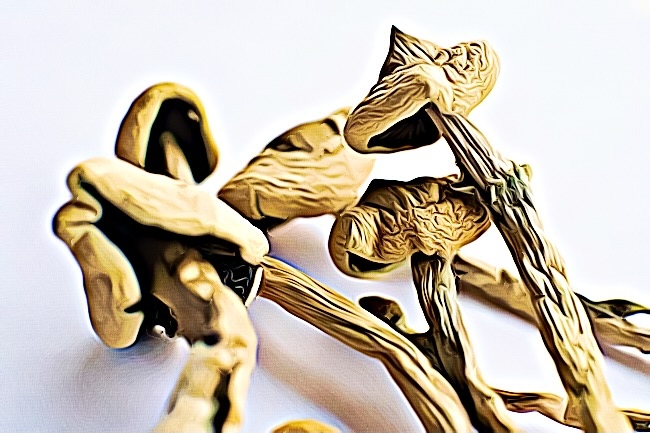People who seek to take on a spiritual journey and go on a cerebral flight into their consciousness often find magic mushrooms to be one of the best psychotropic drugs for it. The long-lasting, kaleidoscopic effects can break down one’s sense of reality, but the Schedule I drug can go from magical to miserable when abused.
Magic mushrooms are starting to take a role in mental health therapy and while it’s true that the psychedelic effects show great potential when it has expert, psychological support, taking shrooms on your own can be risky in more ways than one.
How Long Do Shrooms High Last?
Shrooms often break down slowly in the body and since it goes through the digestive system, the drug can stay active in the body for three to six hours after consumption. The physical effects mentioned above, such as nausea, headaches, and clammy skin, often manifest within the first two hours after ingestion.
The cloud-nine-like-high reaches its peak by the third hour, though the exact timeframe varies depending on the following conditions:
- Weight and body composition
- Metabolism
- Age
- Dose
- Potency
- Type of shrooms
- Type of consumption
- Tolerance level
- State of mind
- Pre-existing mental health conditions
- If other drugs are taken at the same time
With that in mind, some people can experience the full brunt of the high within a few minutes and can escalate into a sensory overload as it progresses.
How Long Does it Stay in Your System?
The body flushes out the mushrooms after 24 to 48 hours, but the drug contains metabolites that can circulate around your system for months. This means taking drug tests weeks after consuming shrooms can lead to positive results, though the timeframe depends on the test.
For example, urine tests can identify metabolites for as long as a week, while hair tests can detect shrooms in your system for up to 90 days since your last ingestion. Hair follicle testing is rarely done due to its expensive costs, so routine tests done in the workplace often miss shrooms since the body can quickly metabolize the drug.
Not to mention, other factors can also influence the effectiveness and timeliness of testing for shrooms. Here are some things to take into account when testing:
- Age – Your metabolism can slow down the older you get, which means the kidney and liver will take a longer time to eliminate the psilocybin from your system. This leaves the shrooms circulating in your body for longer periods.
- Body – Shrooms can also last in your body for a shorter or longer timeframe depending on your body mass index (BMI), metabolism, and water content.
Keep in mind that shrooms can quickly build up your tolerance with just one dosage, so taking another session within a few days won’t produce the same effects and intensity. While it shrooms doesn’t have an addictive effect, the quick build-up of tolerance levels can make it easier for people to abuse the drugs in an attempt to chase the ghost of their first extraordinary experience.

What are the Different Ways to Consume Shrooms? Does the Method of Intake Affect the Shroom’s Bioavailability and the Time It Lasts in Your System?
The way you consume shrooms can have a significant impact on the drug’s bioavailability, which is the time the body absorbs different substances. For example, taking mushrooms as a tea known as “Lemon Tek” is the most efficient way to speed up the metabolic process. Since the liver can break down shrooms thanks to the acidic boost the tea gives, this method can kick the psychoactive high into hyperdrive.
Studies that involved testing the effects of shrooms on animals show that 50 percent of ingested psilocybin can break down in the stomach and intestine within a few hours, wherein 65 percent of the psilocybin content can be flushed off from the body by releasing it through the urine.
As for the bioavailability rate, another research found that psilocybin is at 20 percent, which means the effects can take an hour or two before hitting the user. But as mentioned earlier, there are different methods that can be used to speed up the process and make for a more intense hit.
What are Magic Mushrooms?
Also known as “shrooms” for short, the so-called magic mushrooms are often cultivated in the wild and are sought-after for their psilocybin substance. Psilocybin is a naturally occurring hallucinogenic compound that can cause hallucinations and heightened euphoria.
Shrooms can also go by mushies, blue meanies, golden tops, liberty caps, philosopher’s stones, liberties, Amani, or agaric.
Magic mushrooms are definitely one of the most popular and perennial choices for psychedelics, but being a Schedule I drug means it still has no accepted role in the healthcare industry. Not to mention, it has a high risk for misuse and can cause extreme discomfort for people who abuse the drug for recreational purposes.
What are the Effects?
Shrooms are popular for their intensely hallucinating effects, which means taking high doses can warp one’s reality and sense of time. It creates a psychedelic rift in one’s ability to see, hear, or feel, producing pops of colors and mind-bending visuals. On top of the delusions follows a euphoric burst, one that can lift up the mood and expose deep-seated feelings.
On the flip side, shrooms are being researched for their potential as a supportive treatment for therapy since the high often encourages people to open their hearts, take a hard look at their hidden thoughts, and address past traumas. When done right, shrooms can make a person accept vulnerability and find spiritual healing.
However, shrooms are best taken with the direct approval and supervision of a therapist since consuming the drugs on your own can be a frightening experience, especially if you take it with a poor state of mind. The magical mirages can quickly transform into a nightmare-fueled experience, leading to increased anxiety or panic attacks.
The physical side effects can also feel uncomfortable, especially within the first 30 minutes to an hour after ingestion since it can lead to feelings of nausea, drowsiness, headaches, unsettled stomach, increased heart rate, blood pressure, and clamminess.
The Bottom Line: Understanding the Shrooms Experience and How Long It Lasts In Your System
Shrooms are an intense psychedelic drug that can overwhelm users for their intense trips, and compared to other drugs, it can also last in your system for hours. Knowing the different factors and their influence on the shroom’s bioavailability and intensity should help you consider shrooms with more precaution, though it’s always better to avoid taking them without any approval from your therapist due to their risky effects.
Sources:




